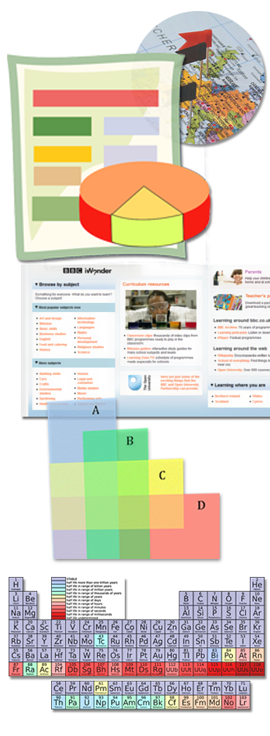Instructional design/Color and Design/Applying Color
| ID Homepage | 1.Introduction | 2.Understanding Color | 3.Combining Colors | 4.Applying Color | 5. Quiz | 6. Learn More |
Applying Color
What Color Can Do
Some Tips & Steps1. Understand the potential color preferences of your learners and clients. Color choices should make sense and be appropriate for the context. 2. Define your goals for using color. Aim to enhance the effectiveness of your instruction not detract from it. 3. Select one hue as your main color and additional colors as needed. Limit your choice to 3-5 colors, as color without a purpose will cause clutter and distraction. Use color pickers and color palette generators to help you. 4. Use the squint test to look at your designs and see where your eye is being led. Is this where you want it to go? 5. Remember that international audiences or learners from different cultures may have different expectations and color associations. 6. Test your choices for suitability and usability with users and clients. 7. Check your colors on different platforms and devices. 8. Keep a record of the colors that work well for you. 9. Have fun and don’t be afraid to experiment. |
Do these colors look businesslike or childlike? |
"I work with few colors, what creates the illusion of quantity is that they fell in the right place"
Picasso
< Understanding Color - Previous Page ---«»--- Next Page - Final Quiz >

